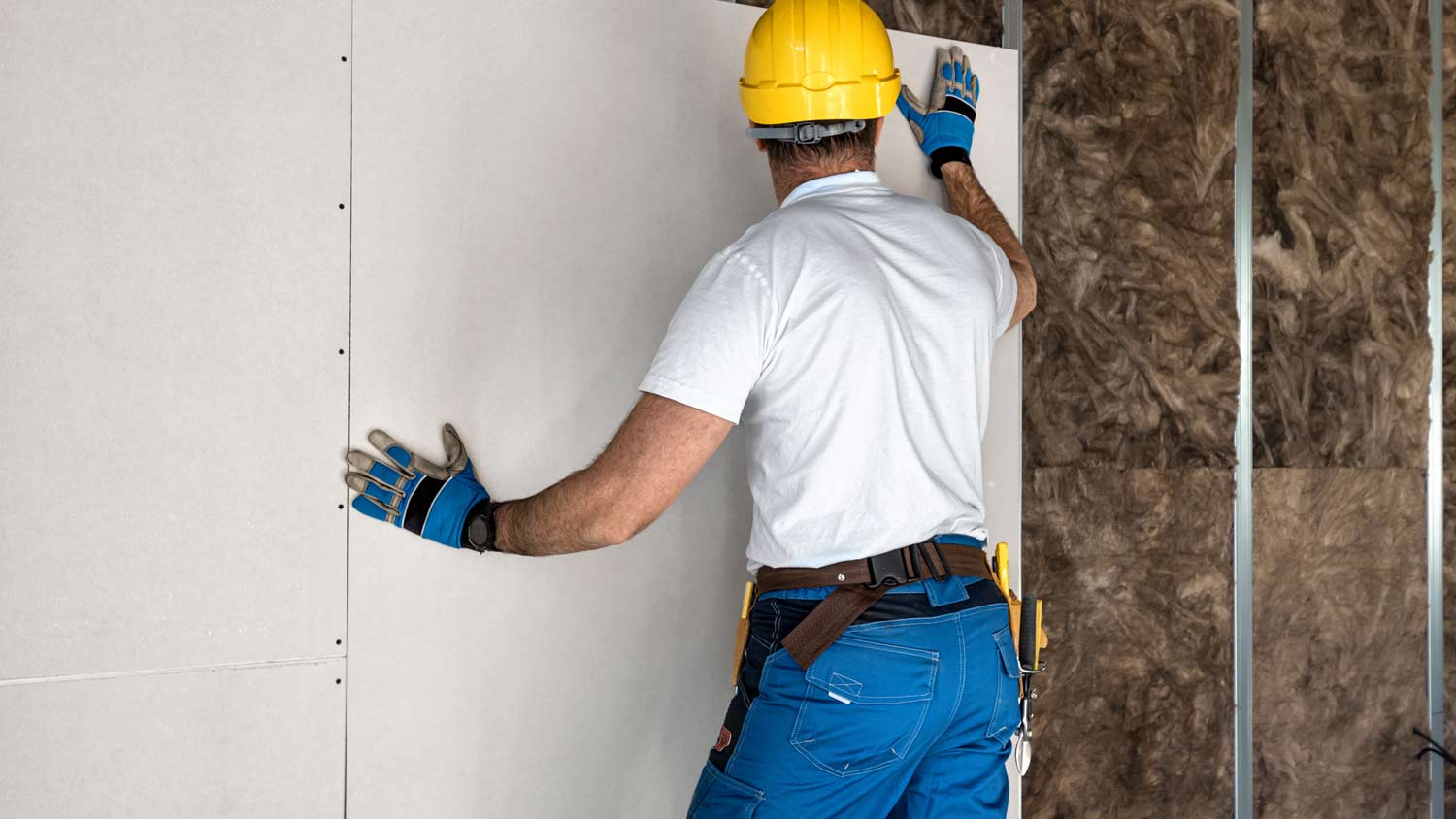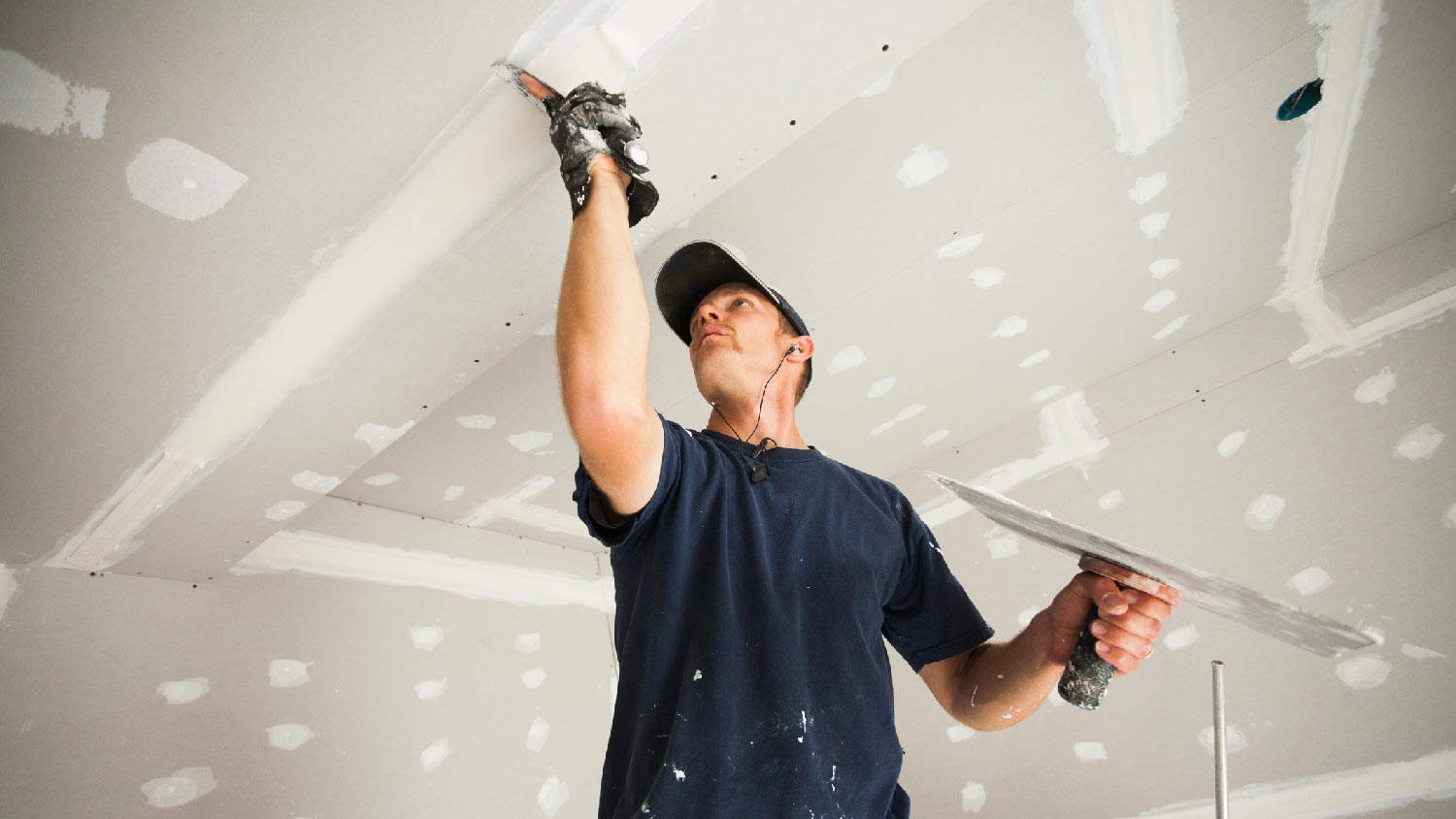
Skim coating drywall is a great alternative to replacement, and is often more affordable. Use this guide to estimate the cost to skim coat walls in your home.
Drywall installation is likely outside of the scope of your average handyperson


Drywall installation seems like a straightforward job for a contractor. It’s the surface that makes your walls actual walls, but there’s a certain art to hanging drywall. That’s why it’s important to hire the right pro for the job. If you’re not sure where to begin, take a look at our hiring guide to learn more about who installs drywall and what that process looks like.
Drywall contractors (also called drywallers or hangers) specialize in drywall repair and installation. Believe it or not, but not all drywall is the same and not all installations are equal. A good drywall contractor will:
Choose the right kind of drywall: Sheets are 1/2-inch thick for residential applications, but you may need thicker sheets for fireproofing in certain areas. You can also choose lightweight drywall for various benefits.
Avoid common issues: Your contractor knows how to hang drywall to avoid common issues like nail pops, sagging, and cracking. This can reduce drywall repair costs and save you money in the long run.
Create a seamless finish across your walls: While DIYers may be able to hang drywall, a seamless finish requires expert skill.
Texturize: A textured finish requires certain techniques depending on the design. Your contractor should be able to match any texture in your existing drywall.
Offer a warranty or guarantee: Most drywall contractors offer a warranty or a guarantee. This helps protect your investment if their work doesn’t hold up.
Reduce strain and chance of injury: Drywall is heavy and hanging drywall alone is labor-intensive. A pro is less likely to strain or injure themselves, will have all the appropriate tools, and can bring in additional team members if necessary.
Work quickly: Drywall installers have the skills to be efficient. They’ll hang drywall more quickly and create less mess than your average DIYer, so installations are less disruptive.

For a big job, hire a local drywall contractor. Hanging drywall is outside the scope of a traditional handyperson because it requires a certain set of skills and expertise. That said, the average handyperson can handle small drywall repairs—whether it’s filling small cracks or patching dents.
There is a specific process to how drywall contractors start and complete the job. They’ll begin by offering a quote. Once the materials arrive, they’ll start the job. Typically, they’ll follow these steps:
Prep the area.
Measure and cut the drywall sheets, making cutouts for doors and other obstructions.
Position and hang the first piece of drywall.
Screw the drywall in place along the studs.
Repeat the process until they’ve installed all of the drywall.
Install corner beads.
Drill in protruding screws.
Tape and spackle the drywall.
Clean up the mess.
Overall, it takes about four days to four weeks to complete a drywall installation—it’s highly dependent on the size of the room. Hanging drywall in a 12-by-16-foot room will only take around eight hours, but that doesn’t account for the time spent sourcing the material as well.
The average cost to install drywall is between $1,000 and $3,200. It depends on the scale of the project and the type of drywall you choose. A higher finish can cost up to $3.50 per square foot, while a basic hanging job can cost as little as $0.80 per square foot. Texturizing will add $1 to $1.95 per square foot to the job.
Bundling services is the best way to save money on drywall installation, repair, and texturing. It’s also more convenient to get everything done by the same team. It’ll save you time, which, when you’re paying labor costs, will also save you money—plus, the results will be more consistent.
Some DIYers can install drywall if they understand the basics, but that doesn’t mean they’ll achieve a seamless look. Though hanging drywall is easier than the old method of lathe and plaster, the finishing techniques require practice.
The biggest difficulty is often the weight. The standard drywall sheet used for most residential projects weighs around 51 pounds. You’ll likely need friends or family to pitch in for the installation. This is especially true for the most difficult jobs, like hanging large sheets horizontally or hanging drywall on the ceiling.
A pro can hang your drywall quickly, safely, and properly.
From average costs to expert advice, get all the answers you need to get your job done.

Skim coating drywall is a great alternative to replacement, and is often more affordable. Use this guide to estimate the cost to skim coat walls in your home.

Drywall texture can create an attractive finish and add dimension to your home’s walls. This guide breaks down the factors that influence the cost to texture drywall.

Installing drywall is the most common way to finish your home’s interior. Use this drywall installation cost guide to see what your project is likely to cost.

Got a hole in the wall? Learn how to spackle a hole in the wall and have it looking like new in almost no time.

Whether you’re renovating a room or finishing a home addition, this guide on how to cut drywall will make your job easier and help keep your home neat.

Wondering how many coats of mud on drywall you need? Learn what affects the number and how to get a smooth, professional finish for any space.